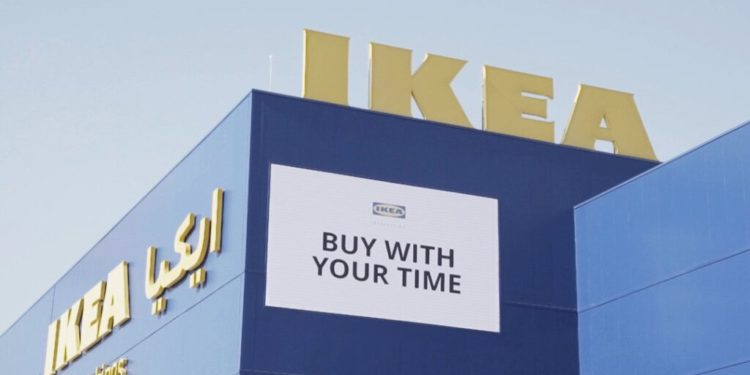“Remember that time is money” wrote Benjamin Franklin in his essay “Advice to a Young Tradesman”. And guess what? In 2021, IKEA, a furniture retailer founded in 1943 by a 17-year-old, and now the world’s largest furniture retailer since 2008, has, in a way, put an end to this age-long debate about whether time is money. It is now literally allowing its customers to buy the various items in its huge stores by the time they end up spending while coming to the store.
To understand this, let’s get into the shoes of a typical IKEA customer. Imagine you plan to buy some furniture for your house. You plan a trip to IKEA for the upcoming weekend. On the day, you check the Google map and find your nearest store. As a matter of fact, most of the IKEA stores are located on the outskirts of cities. You realize that it is going to be a daunting journey. Don’t worry, IKEA has got you covered! IKEA identified this issue and decided to incentivize your time spent commuting to the store and reward loyal customers.
So, you arrive at the store and select your favourite table. You see that the price tag has the price quoted in hours and minutes (the time currency). You trek the whole store, finally checkout and encash the time you spent enroute to the store by showing the timeline on Google maps. And guess what? You just got a scented candle or a bookcase or maybe a veggie hotdog for your valuable time spent in the car commuting to the store.
Source – Ad age
This ‘Buy with your time’ program is currently a pilot in Jebel Ali, Dubai. The prices of goods in terms of time are computed by converting the time using the average income of a citizen of the UAE.
Source – Charged retail
This is the wonderful way IKEA has transformed the flaws in the consumer experience into a reward system. And even more, a superb marketing strategy. People are writing about this all over the internet, and I guess hardly any of the posts or coverage is being paid for. This program has resulted in an increase in footfall by 32% and has earned IKEA more than $14 million worth of absolutely free media.
It is interesting to note that this program acts as a guard against the parallel furniture market over the e-commerce portals. This strategy could help corporations who have a brick-and-mortar model as their core competency to gain an edge over the e-commerce giants who are eroding their market share.
Also, on the positive side, this could also encourage people to step out of their cozy homes and thus, ultimately, change the habit of staying indoors created due to the pandemic and thus speed up the normalisation process of the post-pandemic world.
On the flip side of the coin, this campaign has a built-in incentive to use Google Maps, although any active involvement of Google is not yet clear. Google is a billion-dollar company for whom your data is the biggest asset. The program incentivizes people to download Google Maps and let Google track wherever they are going.
Source – Lifeandmyfinances.com
Also, this new initiative and the success it has achieved will likely result in more corporations following suit and paying customers for their time. With social media giants already coming up with new ways to keep you engaged and end up spending more time on them, the introduction of this model to incentivize the trading of time for some product or service may end up with people losing control of their time even more.
In the word ‘Marketing’, the letter M stands for ‘Marvels’. The marketing industry keeps on surprising the world by pulling out rabbits from the hat! However, this seems to be remarkably peculiar and could be viewed as a potential game-changer for how we commute and how businesses reward their loyal customers for their time, which has been in short supply, especially if you are working from home.
Written by- Roshan Kukreja
Edited by- Riya Khetan
The post Cash in your minutes appeared first on The Economic Transcript.




